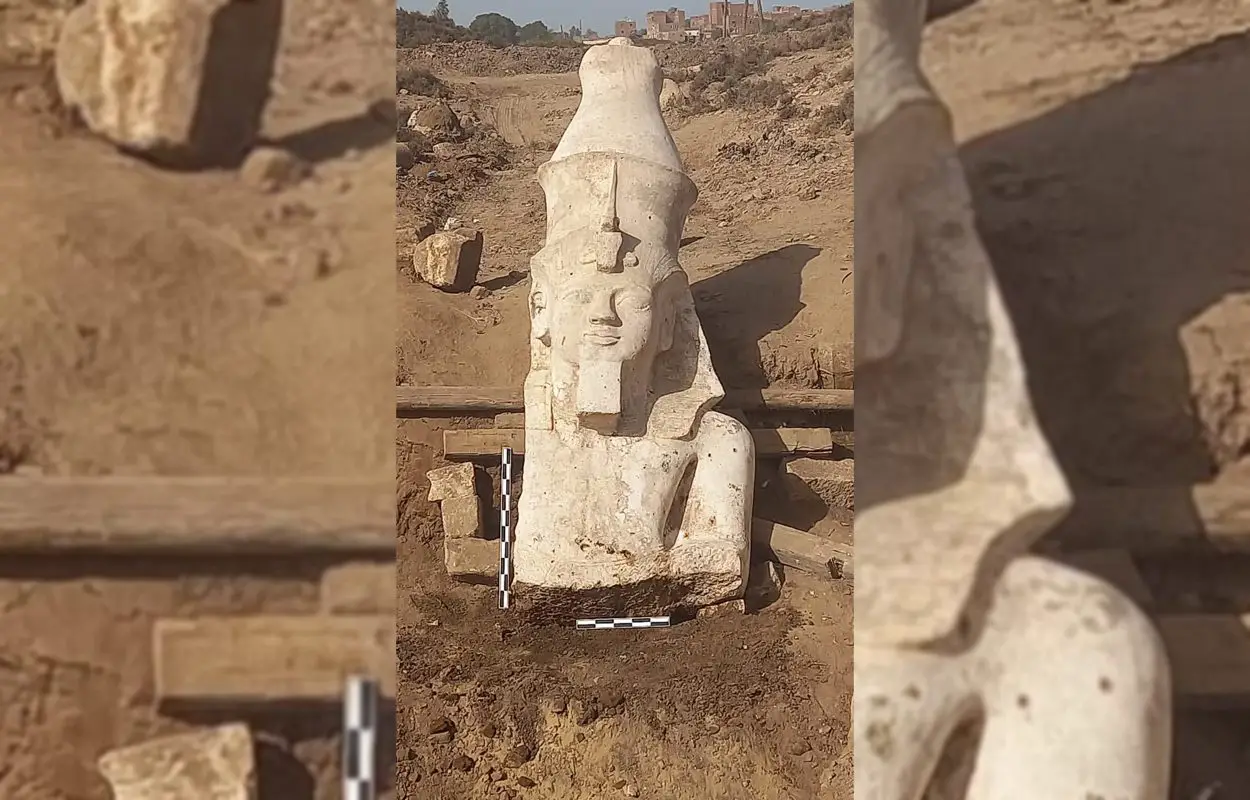A joint Egyptian-American Archaeological Mission has uncovered the upper part of a large status of Ramesses II during excavations in Egypt’s Minya Governorate.
Ramesses II, commonly known as Ramesses the Great, was the third pharaoh of the 19th Dynasty during the New Kingdom period. His reign (1279–1213 BC) is often regarded as the most celebrated in Egypt’s history, marked by military campaigns and large construction projects.
The statue was found during excavations at the ancient city of Hermopolis, located near the boundary between Lower and Upper Egypt. Known as Khemenu during the Old Kingdom period, the city emerged as the provincial capital second only to Thebes.
The Ancient Greeks called the city Hermopolis, meaning “The City of Hermes”, as the Greeks associated the cult of Thoth worshiped at Hermopolis with Hermes. The city was further developed by the Romans into a major religious centre from the 3rd century, by which time the city was part of the Roman province of Thebais Prima in the administrative diocese of Egypt.
According to Dr. Mustafa Waziri, Secretary-General of the Supreme Council of Archaeology, the limestone statue is the missing upper section to part of a statue discovered by German archaeologist G. Roeder during the 1930’s.
Measuring 3.8 metres in height (7 metres when combined with the part from the 1930’s excavation), the statue depicts Ramesses II wearing the double crown and a head covering with a royal cobra. On the upper part of the back column is a series of hieroglyphic inscriptions that describe the glorified titles of the pharaoh.
Dr. Yufona Tranka also explained that the mission has also restored granite columns located on the north side of the Basilica of Ashmonine, a 6th century church dedicated to the Virgin Mary which was constructed on the ruins of the Temple of Talmi.
Header Image Credit : The Ministry of Tourism & Antiquities
Sources : The Ministry of Tourism & Antiquities





